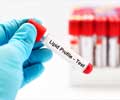Highlights
- A nuclear receptor called REV-ERB is involved in regulating cholesterol metabolism.
- Nuclear receptors regulate essential physiological processes such as growth, development and metabolic homeostasis.
- Drugs targeting REV-ERB may help lower LDL (bad) cholesterol.
One such nuclear receptor is REV-ERB, a protein that plays multiple roles. In the past, Burris has studied its role in regulating mammals' internal clocks.
Cholesterol is an essential component of the cell membrane. Atherosclerosis - plaque buildup in the arteries -- results from an imbalance in cholesterol metabolism. Drugs like statins can lower low-density lipoprotein (LDL) cholesterol levels and risk of atherosclerosis, but they don't work for everyone and some patients discontinue them because of side effects. For these reasons, additional cholesterol lowering drugs are needed.
Studies over the last decade have made clear the important role that REV-ERB plays in metabolic pathways. Previous data demonstrated that REV-ERB deficiency leads to disrupted lipid metabolism; mice that are deficient in REV-ERB expression show a significant increase in LDL and total cholesterol.
Similarly, in a previous study, Burris found that a synthetic version of REV-ERB called SR9009 reduces total plasma cholesterol and triglyceride levels in an animal model.
These results reveal more about the way in which REV-ERB directly and indirectly regulates cholesterol, and suggest that targeting REV-ERB may be an effective method for suppressing LDL cholesterol levels in the clinic.
- Thomas P. Burris et al., Rev-erb regulation of cholesterologenesis, Science Direct (2017) http://dx.doi.org/10.1016/j.bcp.2017.02.006.
Source-Medindia














